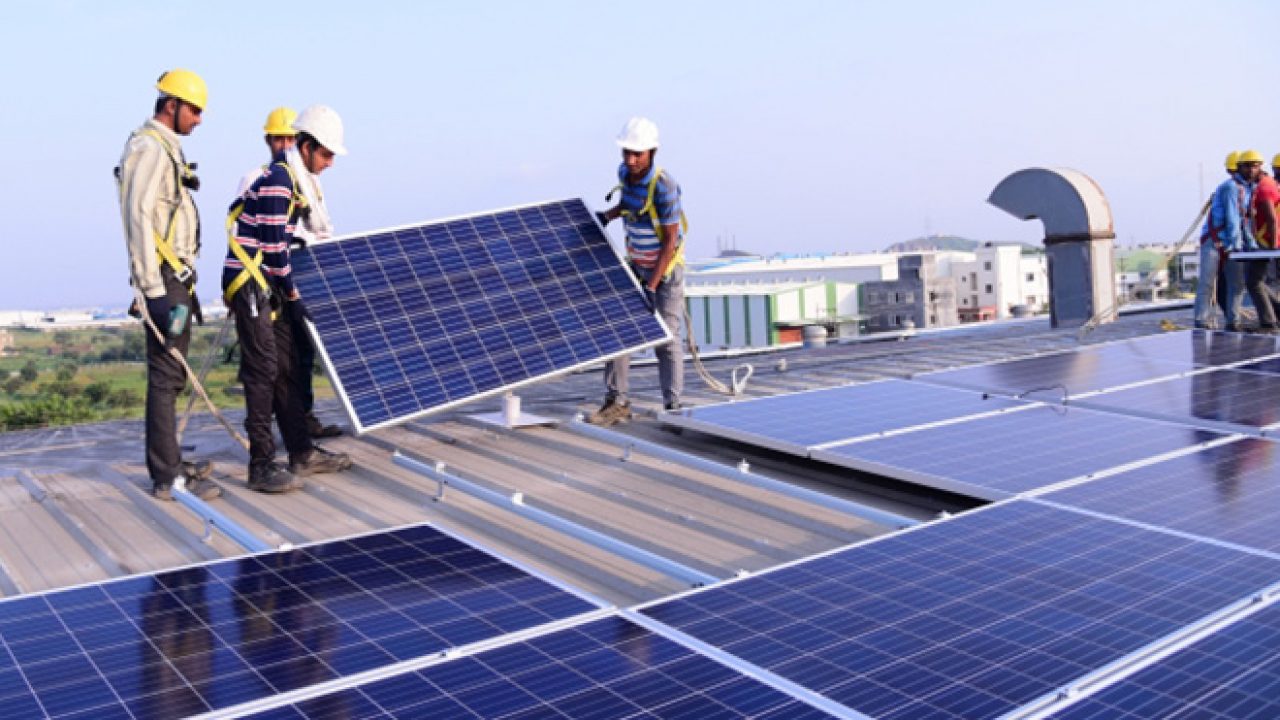According to a brand-new study published on Thursday, India recorded a substantial 76 percent reduction in solar module imports from China during the first half of 2023, defying global trends and demonstrating New Delhi’s steadfast commitment to self-sufficiency in solar manufacturing.
Read more : Amid festive season in India, Gold imports in India surged by 40% in August 2023
According to a report by global energy think tank Ember, India’s solar module imports from China fell from 9.8 GW in the first half of 2022 to 2.3 GW in the same time in 2023.
India priortizes Domestic manufacturing capability
This strategic move, together with the introduction of tariffs, demonstrates India’s intention to reduce its reliance on imports while prioritising the development of domestic manufacturing capability.
According to Neshwin Rodrigues, an India Electricity Policy Analyst at Ember, India’s reliance on China for solar module imports will be significantly reduced after 2022. Domestic manufacturing is gaining traction as a result of recent policy actions.
Aims to attain self-sufficiency in solar manufacturing
He claims that as India approaches self-sufficiency in solar manufacturing, dependency on Chinese panels and cells is no longer a barrier. What’s important now, he says, is to create a favourable policy environment to make sure that solar installations stay pace with the National Electricity Plan.
From April 2022, India will impose a 40% customs tariff on solar modules and a 25% duty on solar cells in an effort to reduce imports and stimulate domestic manufacturing.

The country’s effort to minimising import dependency and cultivating a vibrant domestic solar manufacturing ecosystem is consistent with the country’s larger aims of sustainability and energy self-reliance.
Aims to achieve 500 GW of installed electricity capacity by 2030
India has committed to achieving 500 GW of installed electricity capacity from non-fossil fuel-based resources by 2030 in accordance with its revised nationally determined contributions (NDCs), which are national plans to keep global warming to 1.5 degrees Celsius. This ambitious objective’s core component is solar.
According to the research, China exported 114 GW of solar panels abroad in the first half of 2023, a remarkable 3 percent growth.
In comparison to the same period last year, when 85 GW were exported, this represents a significant rise.
Sam Hawkins, the analytics lead for Ember, declared that solar growth was skyrocketing. With nearly 80% of the worldwide market share, China dominates the solar panel manufacturing industry, which has huge global repercussions.
Europe received 52.5% of the solar modules exported from China during the first half of 2023, making up more than half of all exports.

Exports from China increased by 47 percent year over year (21 GW), totaling 65 GW during the first half of 2023 as opposed to 44 GW during the same period the previous year, contributing to Europe’s significant absolute rise.
While Africa and the Middle East experienced the fastest increase, Europe leads in terms of absolute growth.
Africa’s Imports of solar panels increased by significant percentage
In comparison to the same period in 2022, South Africa’s imports of solar panels from China increased by an astounding 438 percent (2.7 GW). Africa experienced the fastest growth at a rate of 187 percent (3.7 GW), thanks in large part to this surge.
Africa was followed by the Middle East, which grew by 64 percent (2.4 GW) in the first half of 2023 compared to the prior year.

Despite the rise in exports, the report stated that the global gap between solar module exports and installed PV capacity is growing. This is a result of module stockpiling in warehouses and difficulties installing and integrating solar generation into the grid.
We have enough solar panels; we simply need to get started installing them, said Sam Hawkins, data lead at Ember, emphasising the need to speed up installation and grid integration to keep up with the global module supply. In order to keep up with the growing supply of modules, he urged for policies that promote rapid scaling of installation and grid integration.
OTT India updates you with the latest news, The Country’s no.1 digital news platform OTT India, Keeps you updated with national, and international news from all around the world. For more such updates, download the OTT India app on your Android and IOS device.









